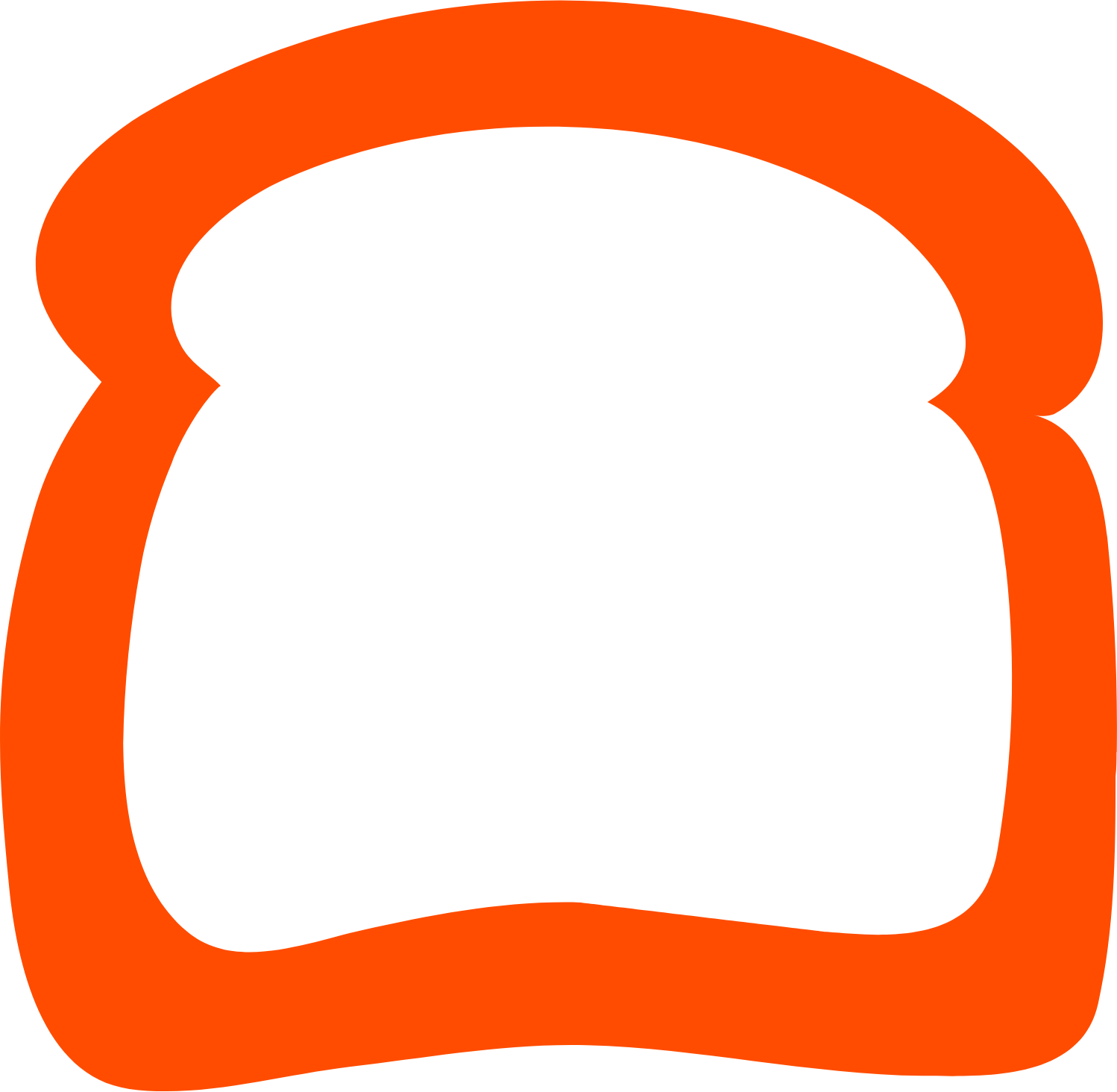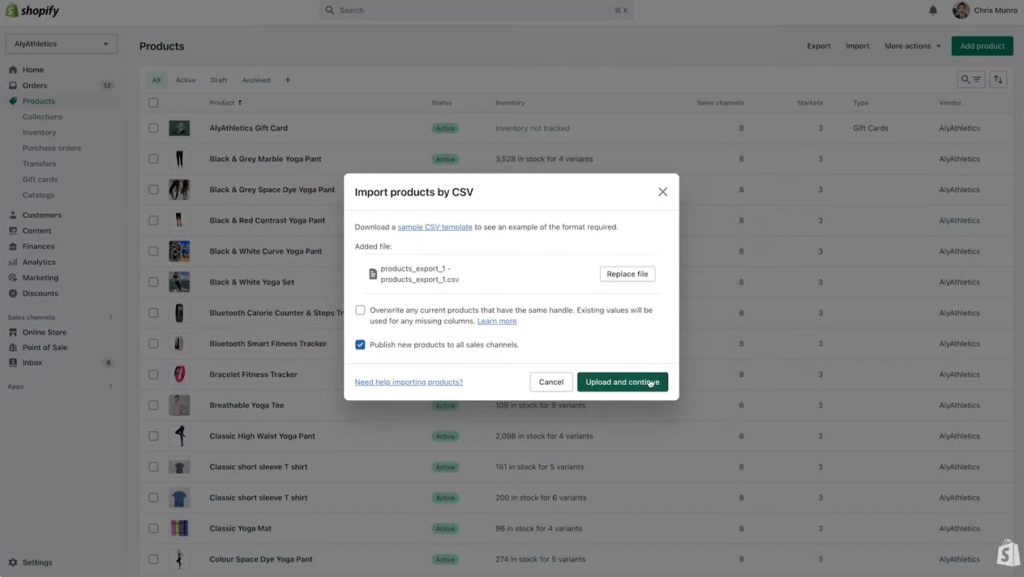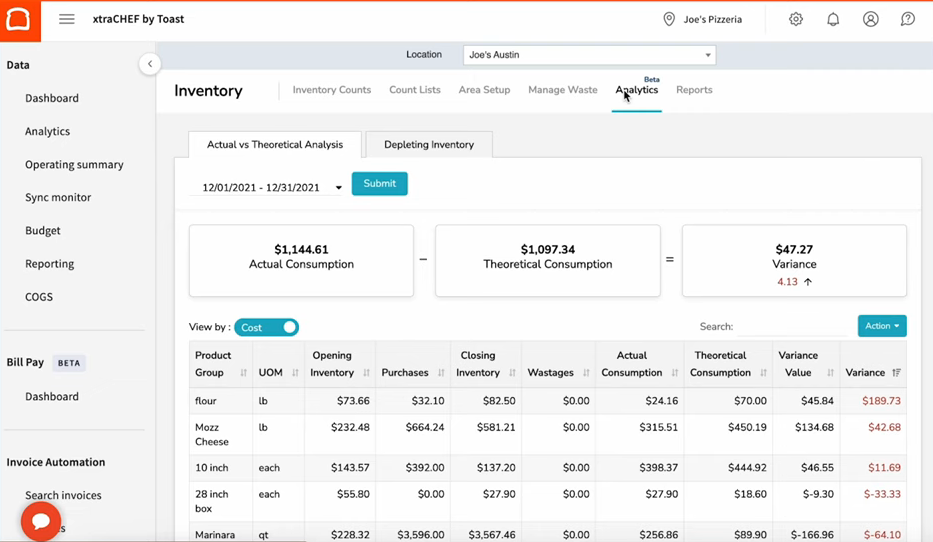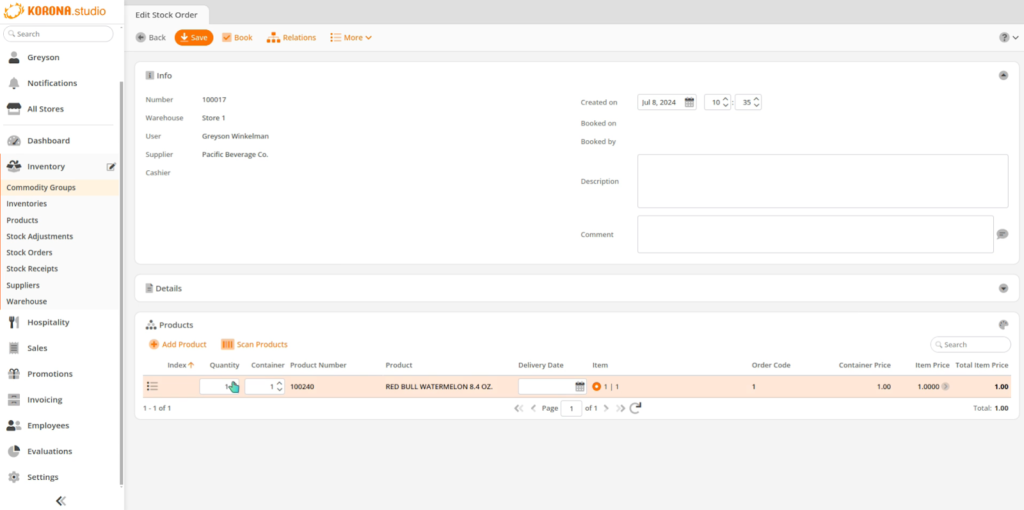Nearly every point-of-sale (POS) system includes inventory management, but the best options are those that offer advanced features to reduce the time and effort of taking stock of your products. We considered nearly two dozen POS software systems and whittled that list down to the six best POS inventory systems based on pricing, advanced inventory features, ease of use, and support.
Best POS inventory system compared
Company
Our Score (out of 5)
Lowest monthly fee
Standout feature

Lightspeed Retail POS
4.51
$89
Advanced reporting

Shopify POS
4.49
$29
Multi-channel inventory tracking, selling

Toast
4.42
Free
Real-time ingredient tracking

Square for Retail
4.38
Free
Built-in photo studio

KORONA POS
4.03
$59
Smart order level optimization

IT Retail
3.74
$49
Price change import

Lightspeed Retail: Best overall
Overall Score
4.51/5
Pricing
4.38/5
Software features
4.75/5
Support and reliability
5/5
User experience
4.38/5
User scores
4.05/5
Pros
- Advanced inventory features
- Advanced built-in reports
- Order and receive inventory from POS
- Track purchase history and segment customers
- Comprehensive employee management
- Supports various hardware setups
Cons
- More expensive than competitors
- No free plan
Why I chose Lightspeed Retail
What’s most important when choosing a POS inventory system, cost and additional features may not matter as much as the actual inventory feature set. This is why Lightspeed Retail, though pricier than other choices, lands at the top of our best POS inventory system list. It includes all the basic inventory tools you expect for a POS to allow you to import products, add SKUs, manage inventory for multiple locations, and create variants for different sizes, colors, and designs. There’s more to Lightspeed Retail’s inventory management, though.
I find the bulk pricing change feature to save a ton of time. Add to this the newest feature that allows you to add pricing as you receive new inventory, and you’ll find yourself spending less time taking stock and managing prices and more time to run your business. I’m also a big fan of how Lightspeed Retail handles vendors and order management; I’m able to purchase new stock through my POS thanks to vendor integration.
Beyond inventory management are plenty of features to help you manage employees and in-store and online sales, and you can use Lightspeed Payments for your payment processing or choose a third-party processor, if you prefer. The good news for established businesses is that Lightspeed Retail doesn’t charge you if you use a third-party payment processor, unlike competitor Shopify.
What I don’t like is that there is no free plan, like what Square for Retail offers. Plus, Lightspeed Retail is decidedly expensive. You can’t access advanced reports or custom reports unless you choose the Core or Plus plan, which are far pricier and likely not suitable for new or small businesses.

Shopify: Best for multichannel sales
Overall Score
4.49/5
Pricing
5/5
Software features
4.75/5
Support and reliability
3.75/5
User experience
4.38/5
User scores
4.55/5
Pros
- Multi-channel selling and inventory tracking
- Multiple fulfillment options (BOPIS, in-person, shipping)
- Thousands of integrations available
- Pro version includes demand forecasting, low stock alerts, and detailed inventory reports
Cons
- Expensive add-ons
- Pricey hardware
- Penalty for choosing third-party payment processor
Why I chose Shopify
Shopify is one of my favorite ecommerce POS systems because it was built for the specific sales channel, so I know it already offers tools for selling online. The real-time inventory management syncs across all channels, so it’s easy to use Shopify to manage stock in warehouses and in stores. It also includes features to help you with buy-online, pick up in store (BOPIS) orders. For these reasons, I think Shopify is better for more than just ecommerce POS needs; it’s more of a multi-channel solution to help you sell online, in store, and online for in-person pickups. There is a caveat: You’ll need Shopify POS Pro, but more on that later.
A standout feature of Shopify is its inventory tracking across all locations, whether they’re stores or warehouses. Though this is a common feature among advanced POS systems, Shopify handles it well and easily. Calculating inventory forecasts is made simpler with Shopify’s sales reports, so you can meet goals, not run out of stock, and price goods to sell based on historical data.
Shopify is constantly updating its POS system to better serve its customers so you can better serve yours. Every few days, it seems, Shopify has improved a feature or released a new tool. Recent changes include adding finance management to the Shopify app, marketing automation improvements, and a better inventory scanner via the app.
In-person selling is going to cost a bit more with Shopify because you need to upgrade from Shopify POS Lite to Shopify POS Pro. You can sell at your store with the Lite version of the POS system, but it’s meant for “casual” selling, as Shopify explains on its site. The Shopify POS Pro plan is where you’ll find all the advanced inventory tools, including demand forecasting and low-stock alerts.

xtraChef by Toast: Best for restaurants
Overall Score
4.42/5
Pricing
4.38/5
Software features
4.75/5
Support and reliability
5/5
User experience
3.75/5
User scores
4.2/5
Pros
- Restaurant-specific inventory tools
- User-friendly system
- Integrations available for online ordering and delivery
- 24/7 customer support
- Offers financing
Cons
- Minimum one-year contract required
- Robust inventory tools require xtraChef add-on
- Payment processing through Toast can be pricey
Why I chose Toast
With a name like Toast, it’s fitting that it would get our pick as the best POS system for restaurants, but it’s more about the niche features tailor-made for eateries that earns Toast the title. I see Toast used in restaurants all around the U.S. because it’s easy to use, includes tools most other POS systems don’t, and good customer support.
Toast’s POS system is excellent on its own because it’s so intuitive. The reports are easy to read and make sense to anyone who’s read a spreadsheet before. I’m a big fan of the menu features also; item countdowns make it simple for everyone to know what to push and what’s less available. Editing menu items is intuitive and when paired with the xtraCHEF add-on, you can easily manage inventory at the ingredient level. You have to use Toast’s hardware, but before you consider that a con, the hardware is built to withstand what goes on in a kitchen or front-of-house. The handhelds are drop-proof and dust- and water-resistant.
The strings attached come in the costs. Most of the best features of Toast are attached to add-on modules that may cost extra. I tried to get a sales representative to reveal the base costs, but to no avail. Given that Toast prefers to negotiate pricing from hardware to payment processing, it’s unlikely you’ll find a standard price anywhere, but more on that below.

Square for Retail: Best for small businesses
Overall Score
4.38/5
Pricing
5/5
Software features
4/5
Support and reliability
3.75/5
User experience
4.38/5
User scores
4.75/5
Pros
- Free plan
- Easy to use
- Real-time inventory management
- Low-stock alerts
- Automated reordering feature
Cons
- Only available for iOS
- Processing fees can be expensive
- Free plan is limited
Why I chose Square for Retail
Square has been serving small businesses for more than a decade, and it quickly became the easiest and fastest way to accept payments, especially for new retailers. The square block used to accept payments is iconic, but it isn’t the only option. Square for Retail is a more robust system with more features, hardware meant for stationary operations, and innovative solutions.
While I’m a fan of how easy it is to set up Square for Retail’s inventory system, and I like the low-stock alerts and automatic reordering of hot-ticket items, these are somewhat standard features. I think a standout feature of Square for Retail’s POS inventory system is its inventory counting tool. I’ve used the tool through my iPhone to scan an item’s barcode and immediately found the entry in the system. From there, I was able to update the count and check the SKU. It’s a big timesaver.
Smart stock forecasting is also a big help. The system assesses your inventory and your quick sellers to provide recommendations on what you should restock soon. Another favorite feature is Square Photo Studio. I’m able to take photos of items and use the app photo editing tool to make them look better. Usually I opt for Square’s AI to enhance the images for me.

KORONA POS: Best for high-risk businesses
Overall Score
4.03/5
Pricing
3.75/5
Software features
3.5/5
Support and reliability
4.38/5
User experience
3.75/5
User scores
4.75/5
Pros
- Industry-custom POS systems
- No contract required
- Third-party processing allowed
- 24/7 customer support
- Automatic reordering
- Easy item lookup
Cons
- Custom integrations cost extra
- Advanced reports and inventory management cost extra
Why I chose KORONA
Although KORONA POS is our pick for the best POS inventory system for high-risk businesses because of its ID scanning feature so you can verify age, it has more reason to choose it regardless of your business type. As a retail POS system, it includes inventory management tools to help you stay on top of existing stock and incoming stock, and has loss prevention tools.
KORONA POS includes low-stock, overstock, and out-of-stock notifications, automatic reordering based on stock levels, and label printing. Like its competitors, you can scan new inventory to receive quickly, tracking shipping of new stock from vendors, and print labels and pricing for your in-store products. You can also integrate your ecommerce inventory.
Like most POS systems, KORONA tries to improve its existing features and release new ones from time to time. In a recent update, KORONA includes new filter templates that make it easy for you to find often-searched items or brands. It’s a small timesaver, but I like it for quick lookups regardless of which employee is doing it. Just choose one of the saved filters and get your counts. Another new option is the automatic retail price adjustment. You can set a minimum profit margin percentage, set the pricing pattern (such as ending in .99), and as pricing fluctuates, you can ensure that your pricing will maintain the margins you set.

IT Retail: Best for grocery stores
Overall Score
3.74/5
Pricing
3.75/5
Software features
4.5/5
Support and reliability
4.38/5
User experience
5/5
User scores
4.83/5
Pros
- Advanced inventory features
- Grocery store-specific features (deli scale integration, bottle deposits)
- Accept all types of payments (including EBT)
- Android-based inventory app
- 24/7 customer support
Cons
- Lack of pricing transparency
- Inventory features seem outdated, manual
Why I chose IT Retail
Grocery stores have specific POS feature needs and there are a few options, but our favorite is IT Retail for its comprehensive inventory management features. As you would expect of a grocery store POS system, IT Retail focuses on real-time tracking of stock, shelf labeling, and easy imports of products and price changes. There are valuable reports to help you keep track of inventory, shrinkage, and low stock.
Every POS system handles price changes a little differently, but I like how IT Retail lets you import price changes in one fell swoop. Another feature that can be helpful is the journal of receipts that lets you see exactly what was purchased in each transaction as an electronic receipt. Also, unlike Square, IT Retail offers an Android app for inventory, so you can make changes to products, prices, purchase orders, and inventory counts, all from your phone.
What is POS inventory management?
What is a POS system without inventory management? A card reader. All jokes aside, though, a POS inventory management system is meant to track stock for ecommerce, retail, grocery stores, and other types of stores. The basics of a POS inventory system include features to intake new stock, track current inventory, manage orders and sales, and save business owners and managers time on the back end. The inventory is tied directly to one’s POS, so every sale, return, and intake of products is subtracted or added, and then recorded to your historical data. This data then helps automatically inform you of low stock, sales trends, and preferences of all sorts of variants.
The old method of inventory required pen, paper, and old-fashioned counting of products coming in from vendors. With advanced POS inventory systems, you can take in new inventory with a barcode scanner or an app from your mobile phone and then set pricing, product details, and SKUs.
The best POS inventory systems include AI-assisted recommendations for automatic reorders, seasonal products, and help you avoid overselling or understocking. Even without AI assistance, a good POS inventory system allows you to set low stock thresholds and alerts, so you’re notified when it’s time to place a new order. There’s also order and vendor integration options, so you can handle all of it from a single unified system.
Key components of a POS inventory system
As mentioned above, even a free POS system includes inventory control of some sort. At the most basic level, you should be able to enter new products into your POS for selling online or in person. These key factors are what make a typical POS system into a proper POS inventory system worth considering:
Real-time tracking
This feature is the start of taking you beyond spreadsheets because you can see your inventory increase or decrease depending on intake of stock or sales in your store as it happens.
Hardware peripherals
Whether your POS system offers proprietary accessories, allows you to use third-party tools, or offers an app that works for your mobile phone, you need a way to track your products. Barcode scanners are quick and easy, but they’re not necessarily better than a mobile app that uses your phone’s built-in camera.
Identifiers
A good POS inventory system includes the ability to create RFID tags, SKUs, or barcodes to make it easy to identify, define, and price items in your store or warehouse.
Variants
You should have the ability to create variants of a product such as multiple sizes or colors.
Bundling
It’s rare to see kitting options in typical POS systems, but some may include this feature to allow you to bundle products together. It’s a helpful option for creating discounted packages to entice buyers or simply a way to sell products that are typically purchased together.
Database
Every POS inventory system should include a database where all of your data is stored. It’s how you’re able to view sales reports, COGS, and other inventory-related information.
Automations
Although this is a newer type of feature, it’s a huge timesaver in inventory management. You should be able to set thresholds for low stock and allow your system to reorder products automatically. Some POS inventory systems offer smart stock reordering and make adjustments based on historical sales data.
Order and vendor management
These are common features in high-tier subscription model POS inventory systems. Traditionally, you have to contact vendors and manage orders separately, but many advanced POS systems allow you to handle supplier information and orders within your POS software.
Forecasting
To calculate your store’s supply and demand equation, you need to consider a lot of factors or trust your POS system to figure out demand forecasting for you. This is especially useful if you have a POS system that gathers customer feedback and then analyzes it to provide you the best time to sell different products.
User permissions
Using different user permissions is a good practice for any business to keep sensitive information safe. In addition to protecting data, using different levels of permissions can keep employees honest and protect against theft by blocking actual inventory counts. Plus, you can trace activities easily.
Analytics
All the data you collect on employees, customers, sales, profits, and losses can be used to show you how your business is performing. In some POS systems, you get pre-built reports you can run regularly to stay on top of everything, while others allow you to create custom reports based on a date range, specific product, or any other data type you have.
Benefits of implementing a POS inventory system
Learning how to use a POS system may start with processing a payment, but the meat of your system is in the inventory. This is where you’ll find data that helps you understand the health of your business, which items are trending in your store, and what your customers prefer. There are many benefits of using a POS inventory system to help optimize your sales.
Reduces error
To err is human, so when we use systems meant to track data, it improves accuracy in inventory, orders, and fulfillment. All of these benefits lead to happier customers and employees.
Provides insight
It would take you much longer to track sales, promotions, and losses to find out how well your business is running. With a POS inventory system, all of that tracked data is available when you’re ready to view it, giving you insight into which products are selling and what customers want.
Increases productivity
Taking inventory is a long process without the aid of a POS inventory system and scanners. With these tools, you can get through inventory quickly and move on to the next order of business.
Prevents loss and theft
Some stock has a shelf life, so using one of the best POS inventory systems can help you track dates of when inventory came in and when it needs to go out so you don’t lose money or products to spoilage or deterioration. Tracking inventory accurately can also prevent employee theft because you should be able to see the date of delivery, intake, and who managed the process.
Streamlines processes
Having a core POS system can unify many of your processes, which saves time and money. Using a single program and connecting other business software you use reduces effort and keeps all data in one place.
Reduces cost
Whether you need to pull back on items that aren’t selling, reduce waste, or replenish stock, a POS inventory system can help inform you of these points. Overall, it can reduce the money you spend on stock and ensure you sell what you have.
Challenges of implementing a POS inventory system
It’s important to pick the right POS inventory system for your business with the tools and features you need, otherwise, it could put your business at risk. There are a few challenges you may encounter with POS inventory systems, but if you’re aware of the hurdles, you can easily clear them.
Inaccuracies
There’s no guarantee that a POS inventory system will always be accurate. You still may have human error, theft, and inconsistencies that lead to poor data. This can lead to overstocking, false forecasting, and loss overall. Ensure that your processes are tight, from receiving to inventory counting to tracking.
Difficult to use
A complex POS system may lead to issues, especially if you don’t have training for employees. There are actions you can take to set your business up for success, such as posting the proper processes, extensive training, and choosing a POS inventory system that users and experts claim is easy to use.
Subpar support
A support team that isn’t helpful can easily be the downfall of a good POS system. If you can’t get questions answered, help with installation, or proper training for your team, it’s more likely that you’ll struggle to use your POS inventory system the best way.
Data migration
Whether you have to do it yourself or a POS software company offers to perform a data migration, things can go wrong. When technical issues occur, you risk having inaccurate data, which can affect customer relationships and historical data you need.
Time sink
Learning how to use a new POS system can be a time-consuming process. This is one of the biggest challenges of switching to a new system if you still need business operations to continue.
Costs
Most of the traditional POS systems that you buy outright are gone and you’re going to have ongoing costs for your POS. Hardware wears out, software prices increase, and you may need to upgrade at some point. Budgeting for your POS needs is your best defense against the pricing challenge.
Choosing which solution is best for your business
You have a lot to consider when choosing the best POS inventory system for your business. Factors such as upfront and recurring costs, advanced features, ease of use, and quality of customer support should all be taken into account. Also think about what your business needs the most to operate seamlessly. Restaurants need ingredient-level tracking, while retailers may prioritize BOPIS fulfillment features, and all small businesses will benefit from automated stock reordering, alerts, and analytics.



























